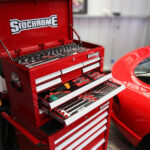The last couple of years have been tough on everyone, but one good thing to come out of all this is that more of us are getting the exercise we need. Cycling and bike sales have exploded, as more people see personal health as a top priority. Choosing your first bike might be a daunting task, considering that so much is on offer. There are more brands than ever before, and so many types of bikes. The basic divide is between mountain and road bikes. And the huge variations in between that lend to hybrids, gravel bikes, or something you’d want for your everyday commute. Apart from single-speed fixies, most have gearing that lets you ride fast along flat straights or tackle steep inclines. And all this is done with a crucial part – the cassette.
What are Bike Cassettes?
Cassettes are the set of sprockets at the back wheel that allows you to change gears. By using the shifters at the handlebars, you can go up or down the sprockets to make riding hills easier or pick up speed when the road eases out. Having more sprockets or gears means shifting is smoother, and you don’t need to abruptly change how fast or slow you pedal.
The trend in bikes today is to include more sprockets in the cassette to allow for different types of terrain and easier riding. 10 speed cassettes, for example, give you enough scope to adjust how you ride according to your fitness level and the incline of the road. Each sprocket has a set number of teeth. The more teeth, the bigger the sprocket, and the easier you can go uphill. Mind, you’ll need to pedal faster. And on sprockets with less teeth, you’ll be pedalling slower, but can go further. This is called the gearing range.
The number of sprockets determines the total number of gears. To figure out how many gears a bike has, count the number of sprockets at the back, and times that by the number of chainrings at the pedals. A bike with a 10-speed cassette and a double chainring for instance has 20 gears.
What are the Types of Bike Cassettes?
This depends on the type of bike. Mountain bikes have visibly bigger cassettes with more teeth as they’re more suited to steeper slopes. Road bikes have smaller cassettes that make it harder riding up the same stretch of gradient, but are faster on flat roads. There’s also a difference in how the gears are spaced. There’ll be bigger steps from one gear to the next in a mountain bike than a road bike. This means shifting up or down is smoother on road bikes, and there’s a smaller chance of the chain hesitating or even coming off.
Which Cassette is Right for Me?
Entry-level road and mountain bikes have fewer sprockets in the cassette than more upscale models. A starting point for both is an 8-speed cassette that is matched with a double chainring for road bikes, and a triple chainring for mountain bikes. If your fitness levels are nothing to brag about, and you’re just getting into cycling then this is just about right. The middle ground, and the one that offers the best balance between price and performance, are 10-speed cassettes. Offerings from major parts brands like Shimano, SRAM and Campagnolo have current 10-speed cassettes for mountain, road, gravel and hybrid bikes. Tiagra and Deore from Shimano, PG 1070 from SRAM, and Campagnolo’s Veloce are some of the most popular 10-speed cassettes. They all feature modern designs, tough and low-wearing steel alloys and are lighter than cassettes on basic bikes. For those riding hundreds of kilometres each week, or are seasoned mountain bikers, 11 or 12-speed cassettes come in still lighter, have more gearing range and shift smoother. Be prepared to drop a pretty penny on these though, as they include high-tech materials to keep the weight down.
I Need a New Cassette. Can I Change the One I Have Now?
There are several reasons why you’d want to change the cassette. Either it’s worn, seen a lot of use and there’s obvious damage to the teeth which makes shifting hard or impossible. The chain might also be slipping. The other reason is that you may need more gear range with a cassette with more gears. If your bike has a 10-speed cassette you can swap this out for a 9 or 8 speed, and only change out the chain. Going the opposite way, from a 10-speed to cassettes with more gears, you need to change a few other parts as well. First is the shifters, since you have more gears, and then the rear derailleur, because it needs to move the chain further. A more cost-effective way to get better and quicker shifting and more range is to get a new “groupset” that has all the required parts, including the cassette. Just make sure that if fitting something bigger, there’s enough space at the rear wheel, something you can confirm in your bike spec sheet.
Cassettes, after brakes and brake pads, are the parts that most riders change out when upgrading their bikes. They give riders more gear range, better shifting, and with more teeth, make it easier when roads turn steep. Look for cassettes, groupsets and other bike parts in your nearest bike shop.




